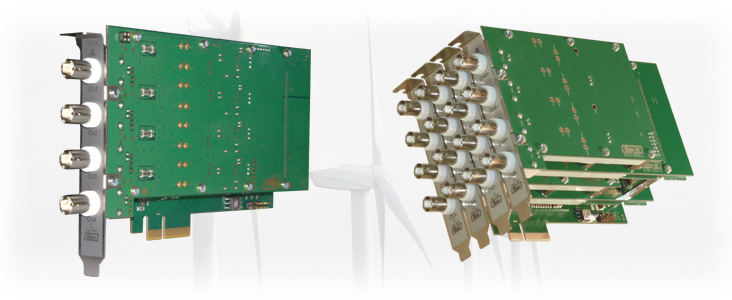Unleashing Insights: The Art and Science of Data Acquisition Systems
Unleashing Insights: The Art and Science of Data Acquisition Systems
Blog Article

In an era where information reigns supreme, the importance of robust data acquisition systems cannot be overstated. These systems serve as the backbone of modern data analysis, enabling organizations to capture, process, and interpret vast amounts of data from diverse sources. Whether in scientific research, industrial automation, or environmental monitoring, a well-designed data acquisition system transforms raw measurements into actionable insights, paving the way for informed decision-making.
As we delve into the intricacies of data acquisition systems, we uncover the delicate balance between art and science that defines their development. From the selection of sensors and data loggers to the implementation of software solutions for analysis, each component plays a critical role in ensuring accuracy and efficiency. By understanding the underlying principles of data acquisition, businesses and researchers alike can harness the full potential of their data, unlocking new opportunities for innovation and growth.
Request A Demo
Understanding Data Acquisition Systems
Data acquisition systems are essential tools for collecting, measuring, and analyzing data from various sources. They enable the conversion of physical phenomena into digital signals, which can be processed and interpreted by computers. This process is crucial in a wide range of applications, including scientific research, industrial automation, and environmental monitoring. By integrating sensors and other instrumentation, these systems provide accurate and real-time data that facilitate informed decision-making.
A key component of data acquisition systems is the variety of sensors used to capture different types of data. These can include temperature, pressure, humidity, and electrical signals. The sensors convert the physical measurements into electronic signals that the system can process. High-quality sensors contribute to the overall accuracy and reliability of the data collected, making it vital to choose the appropriate sensors for specific applications.
Additionally, the software and hardware components of data acquisition systems play a significant role in determining their performance. The hardware includes the data acquisition devices, such as analog-to-digital converters, while the software provides the necessary tools for data analysis and visualization. Together, these components work seamlessly to ensure that data is gathered efficiently and accurately, allowing users to derive meaningful insights from their data sets.
Key Components and Technologies
A Data Acquisition System consists of several critical components that work together to capture and process data effectively. At its core, the system includes sensors that detect physical phenomena such as temperature, pressure, and humidity. These sensors convert analog signals into electrical signals that can be interpreted by the system. The choice of sensors is crucial, as they must be appropriate for the specific application and provide accurate and reliable measurements.
The next essential component is the data acquisition hardware, which typically consists of analog-to-digital converters and signal conditioning modules. The analog-to-digital converter is responsible for transforming the continuous analog signals from the sensors into digital data that can be processed by a computer. Signal conditioning is also vital, as it prepares the raw sensor signals by filtering out noise and amplifying weak signals to enhance data quality. Together, these hardware elements ensure that the data collected is precise and usable for analysis.
Finally, software plays a pivotal role in a Data Acquisition System, as it allows for the configuration, monitoring, and analysis of the data collected. The software interface provides users with the ability to visualize real-time data, set thresholds for alerts, and perform data logging. Advanced software solutions also offer data analysis tools, enabling users to interpret results and gain insights from the data. By integrating these key components and technologies, a Data Acquisition System can effectively support a wide range of applications across various industries.
Applications and Industry Impact
Data Acquisition Systems play a crucial role across a variety of industries, facilitating the collection and analysis of data that drives decision-making processes. In manufacturing, for instance, these systems are instrumental in monitoring production lines, ensuring quality control, and enhancing operational efficiencies. By capturing real-time data on equipment performance and environmental conditions, organizations can reduce downtime, optimize resource allocation, and ultimately improve their bottom line.
In the fields of healthcare and biomedical research, Data Acquisition Systems are essential for capturing data from various medical instruments and sensors. They enable continuous monitoring of patient vitals, automate data collection for clinical trials, and support the advancement of medical research through precise data analysis. The insights garnered from these systems can lead to improved patient outcomes and the development of innovative treatment methodologies.
Environmental monitoring and control are also heavily reliant on Data Acquisition Systems. In sectors such as agriculture, these systems help in tracking soil conditions, weather patterns, and crop health, allowing farmers to make informed decisions that enhance yield and sustainability. Additionally, they are employed in climate research and pollution monitoring, where accurate data collection is vital for understanding environmental changes and developing strategies for mitigation. Through their diverse applications, Data Acquisition Systems significantly impact industries by enabling smarter operations and driving advancements in various fields.
Report this page